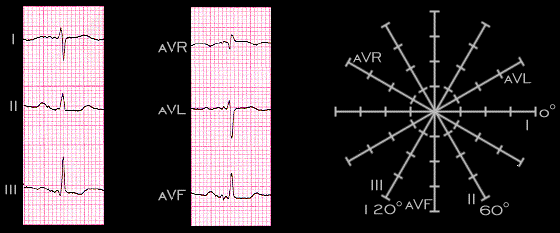
The QRS axis in this example is +120 degrees. Notice that the QRS complex is positive in leads II, III and aVF but most poitive in lead III. It is mosty negative in leads I and aVL and about equally negative and positive in lead aVR (i.e. perpendicular to lead aVR). These findings translate to the axis of +120 degrees.
